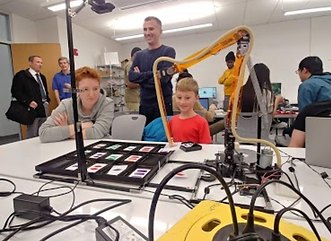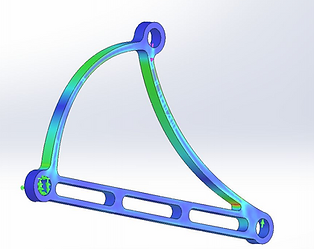
Projects

- Anonymous -
“Never let small minds tell you your dreams are too big”

Spin and Trim - Dec 2018
This machine is a cannabis trimmer for a client in California. They wanted an easily cleanable, damageless, industrial trimmer that could be used on the farm. The Spin and Trim's design is modular, inexpensive and safe on the cannabis flowers.
The cannabis industry is growing rapidly and to be able to make a machine that could be used in the booming industry was a huge opportunity.
Read the full technical report here.
We hosted a game night for children in the Medford/Sommerville area in which they could play robots that we had built in some of their favorite card games. The card game we chose was Set!, a game of visual categorizing.
Using vision processing and a robotic arm that we designed, built and programmed, we were able to find sets in the array of cards, pick up the cards and deal out new cards so that the child could find the next set.
Read more at: https://sites.google.com/view/setrobot

Set! Playing Robot - Dec 2018

The object of this project was to design an acrylic piece that could hold 5 pounds and deflect exactly 0.1 inches. We made two structures, one that was more conservative (c shaped) and one that was less conservative and designed to be as light as possible (pictured on the left).
We designed both structures using SolidWorks and used the incorporated FEA simulations to determine how to make the structure better. Back of the envelope Castigliano's calculations were also done in order to make sure that the SolidWorks values were close to what were in a ballpark range that we would expect.
Read the full report here.
Acrylic Structure Design - Nov 2018

Fencing Refereeing Robot - May 2018
As a fencer, I know the struggles of trying to referee a large fencing tournament. There are never enough referees and sometimes it is hard to see what is happening.
We designed a robot that could watch a fencing bout and referee the entire tournament. It did everything from calling out who should be fencing on the strip to watching the bout and keeping track of the score to determining the rankings at the end of the tournament based on all the previous bouts and their scores.
Read the full report here.

During the summer of 2017 I worked at the Center for Engineering Education and Outreach (CEEO). Since so many people in our office had Fitbits, we had a color in thermometer to track our collective walking steps for each week.
I designed an automated thermometer using a myRIO and arduino that would use the Fitbit API to grab my coworkers steps for the day and keep track of our collective steps on a LED strip. It even changed color based on how close we were to our goal, and when we reached our goal it would do a little rainbow dance.
The hardest part about this project was learning about OAuth2, which had to be used due to the fact that Fitbit has privacy settings (for obvious reasons), so you need specialized app keys to be able to access each person's step count. That also involved making a separate interface so that I could send my coworkers a link for them to easily sign in with their Fitbit account and join the thermometer.
Read the instructions I made here.